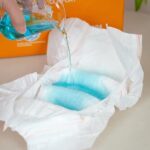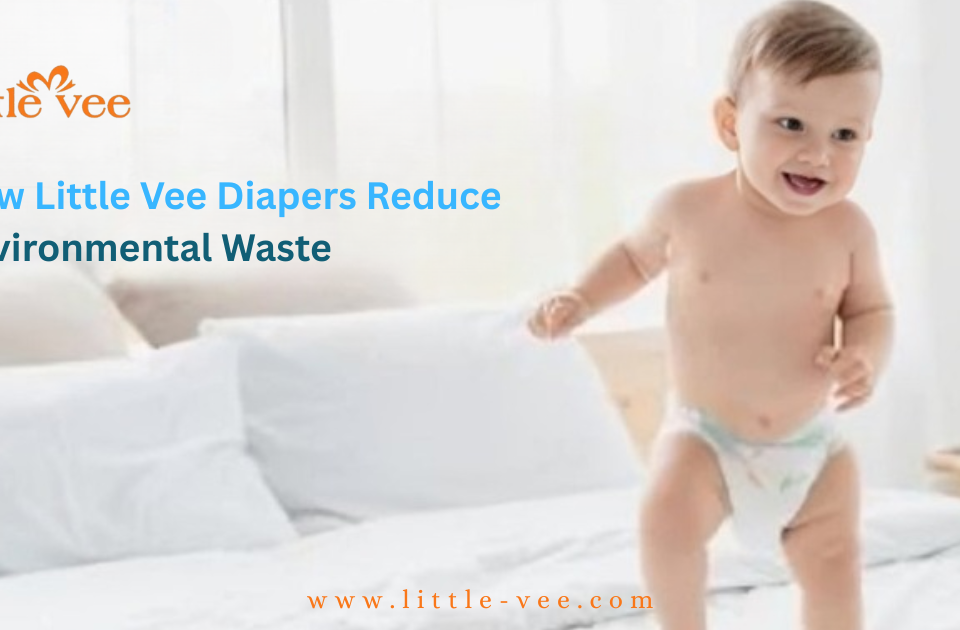
The Ultimate Diaper Guide: What New Parents Need to Know
June 14, 2025
Top Baby Diapering Mistakes & How to Avoid Them
June 16, 2025As a parent, there’s nothing more important than your baby’s comfort. If your little one is fussy, squirmy, or showing signs of discomfort during diaper changes, their diaper might be to blame. Irritation from diapers is more common than you might think—and luckily, it’s easy to manage once you know the signs.
Here are 5 clear signs your baby’s diaper is causing irritation and what you can do to fix it fast.
1. Redness or Rash in the Diaper Area
This is the most obvious and common sign. If your baby’s skin looks red, bumpy, or inflamed—especially around the thighs, bum, or lower belly—they may be reacting to the diaper’s materials or moisture buildup.
How to Fix It:
- Switch to hypoallergenic, fragrance-free diapers like Little Vee, which are gentle on sensitive skin.
- Apply a mild diaper cream or ointment with zinc oxide.
- Let the area breathe between changes.
2. Baby Seems Unusually Fussy or Cries During Diaper Changes
If your baby cries or flinches when you’re changing their diaper, it could be due to discomfort, chafing, or irritation. This kind of fussiness is usually a reaction to feeling raw or sore.
How to Fix It:
- Use shea butter–infused diapers (like Little Vee) to add a layer of natural moisture protection.
- Avoid wipes with alcohol or harsh ingredients—opt for water-based wipes.
- Ensure the diaper isn’t too tight around the legs or waist.
3. Skin Is Dry or Peeling
Dry, flaky skin in the diaper area often means the diaper isn’t breathable enough, or your baby’s skin is reacting to synthetic materials or chemicals in the diaper lining.
How to Fix It:
- Choose diapers with breathable outer layers that let air flow while locking in moisture.
- Look for certifications like CPC, ISO 9001, and FSC, which ensure safe, skin-friendly manufacturing standards.
- Keep diaper area moisturized with a fragrance-free baby lotion or balm.
4. Diaper Feels Damp Too Often
A damp-feeling diaper (even shortly after a change) increases the risk of rashes, infections, and irritation. This usually means the diaper isn’t absorbing properly or fast enough.
How to Fix It:
- Switch to ultra-absorbent diapers that lock in wetness for longer—like Little Vee’s 12-hour leak-proof diapers.
- Ensure you’re changing the diaper every 2–3 hours during the day or whenever it feels wet.
- Consider overnight diapers for longer sleep stretches.
5. Visible Chafing or Marks from Diaper Edges
If you notice red indentations or rubbing along your baby’s thighs or waist, the diaper may be too tight or poorly fitting. Chafing causes skin breakdown, which can turn into more serious irritation if not addressed.
How to Fix It:
- Make sure you’re using the correct size diaper for your baby’s weight and growth stage.
- Opt for diapers with soft, stretchy side panels and a comfortable waistband.
- Avoid overtightening—there should be two fingers’ space around the waist.
Choose Comfort. Choose Little Vee.
At Little Vee, we understand that your baby’s skin deserves only the gentlest touch. Our diapers are:
✔ Infused with shea butter for soothing softness
✔ Made with hypoallergenic, fragrance-free layers
✔ Designed for maximum breathability
✔ Certified safe by FDA, CPC, FSC & ISO 9001
✔ Trusted by thousands of parents worldwide
If your baby is showing any of these signs of irritation, it might be time to make the switch.





